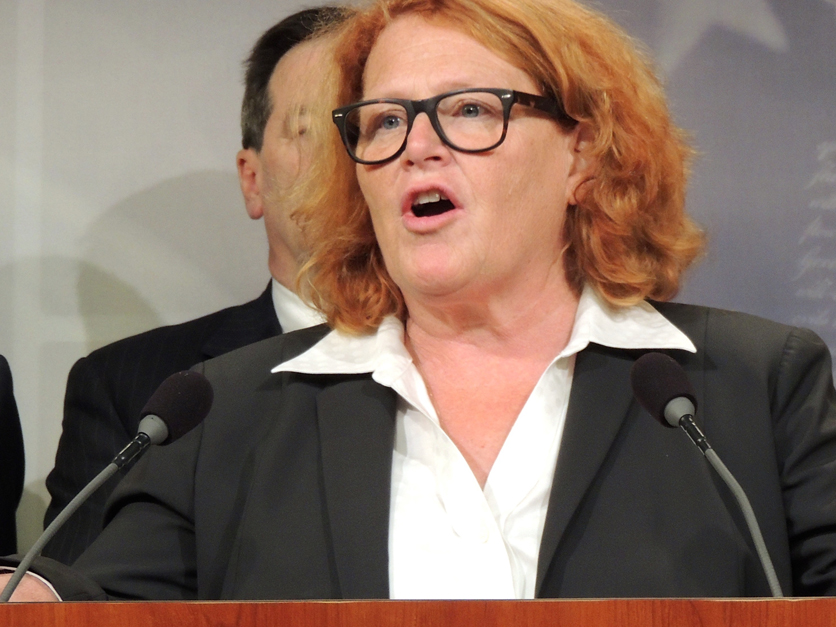Rural Americans need a health care system that fits their unique needs, says a new report from the Bipartisan Policy Center.
“Health care services need to be right-sized to fit community needs and not vice-versa,” said Sen. Heidi Heitkamp, D-N.D., Wednesday morning at the BPC offices in Washington, D.C.
Heitkamp was echoing the recommendations of the report, “Reinventing Rural Health Care,” which contains four recommendations, the first of which, “right-sizing health care services to fit community needs,” says that not every community needs a critical access hospital.
With more and more rural hospitals closing their doors, the report says that CAH’s need to be “reimagined” in order to provide more “holistic” health services in rural communities. Facilitating the transformation of CAH’s would allow them to become “more focused on primary care and prevention and would accelerate delivery system transformation overall,” the report says.
Other recommendations include:
- Creating rural funding mechanisms. “Given small population sizes, growing health care needs, and demographic trends, rural areas need alternative Medicare and Medicaid reimbursement metrics and payment mechanisms that allow for value-based alternative payment models and innovation,” the report says
- Building and Supporting the Primary Care Physician Workforce. “New workforce models should be examined in collaboration with universities and residency programs to expose providers to rural environments and telemedicine, and reserve placements in medical programs for rural residents. Alternative providers such as nurse practitioners and physician assistants can fill vital primary care roles in rural communities.”
- Expanding Telemedicine Services. “Telemedicine is a promising way to connect patients with providers and create a peer network for rural providers that will improve recruitment and retention. However, it must be supported by adequate broadband services and reimbursement. Rural health systems need to provide health professionals with the necessary tools and technology to offer this type of quality care to their patients.”
The report took note of the challenges facing rural residents. A recent Centers for Disease Control and Prevention (CDC) study showed that rural America’s 46 million residents face a greater risk than their urban counterparts of dying from five leading causes – heart disease, cancer, unintentional injuries, chronic lower-respiratory disease, and stroke.
“Age-adjusted death rates from unintentional injuries are 50 percent higher for rural than for urban populations,” the report says. “Rural residents rank worse on many health metrics, such as obesity rates and tobacco use, and suicide rates in rural areas have historically been higher than in urban areas, a gap that appears to be widening.”
Beyond simply health care, however, Heitkamp said that those who wish to help rural America need to look at the whole picture.
“We can't talk about health care unless we talk about all the challenges,” she said, mentioning high poverty rates in rural areas; more isolation; fewer transportation options; and an aging population.” There is also the overarching issue of low commodity prices, which have socked rural communities, and, in the Dakotas, growing concern about drought.
Sen. Mike Rounds, R-S.D., joined Heitkamp at the event, telling the audience that the Affordable Care Act’s goals are “admirable,” but that many people still are not receiving the care they need.
Rounds said that when he was governor, “we had 17 companies offering group insurance coverages in South Dakota. We had 13 companies offering individual coverages. Today we’ve got two.”
Both Rounds and Heitkamp endorsed a bill introduced by senators Lamar Alexander, R-Tenn., and Patty Murray, D-Wash., which is designed to stabilize the insurance markets for the next two years by including funding for the ACA’s cost-sharing program.
“We need to fix the private market,” Heitkamp said, adding that the Murray-Alexander bill would stabilize the ACA “while we have the right conversation about health care.”
A critical innovation in rural areas has been telemedicine, which Rounds said is working in various locations in South Dakota. But in order to make optimal use of telemedicine, rural areas need broadband service. He spoke favorably of the initiative announced by Federal Communications Commission Chairman Ajit Pai to provide $500 million in funding for cooperatives and small rural carriers.
“What we're really talking about is, if you can watch your favorite college team on TV or on a computer, you ought to be able to also provide appropriate connections in emergency situations,” Rounds said. And Heitkamp lauded efforts by Sen. Shelley Moore Capito, R-W.Va., who started up a broadband caucus and has been pushing to make sure broadband is a top priority in infrastructure legislation.


